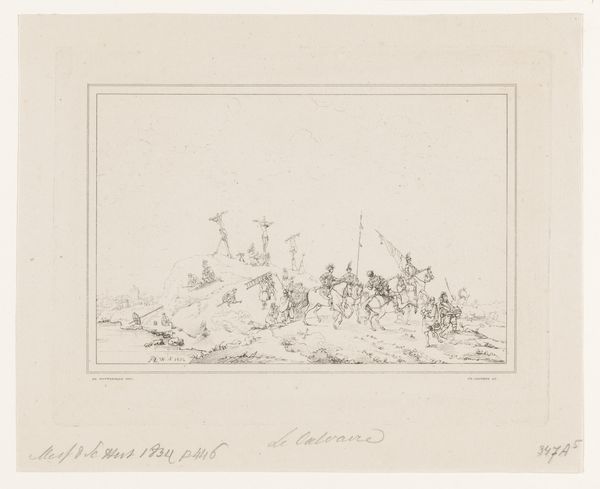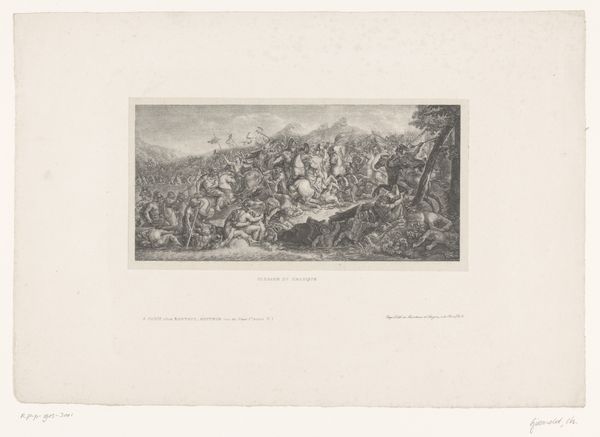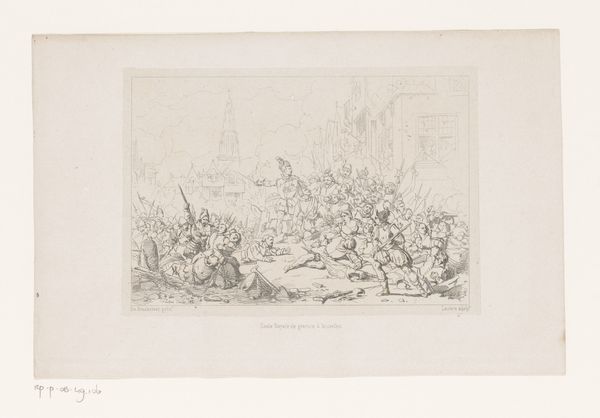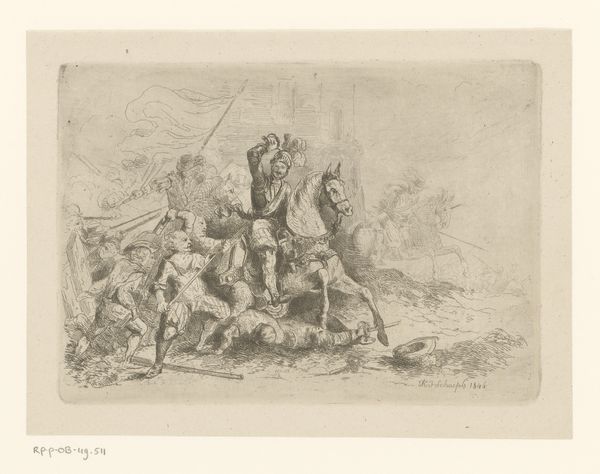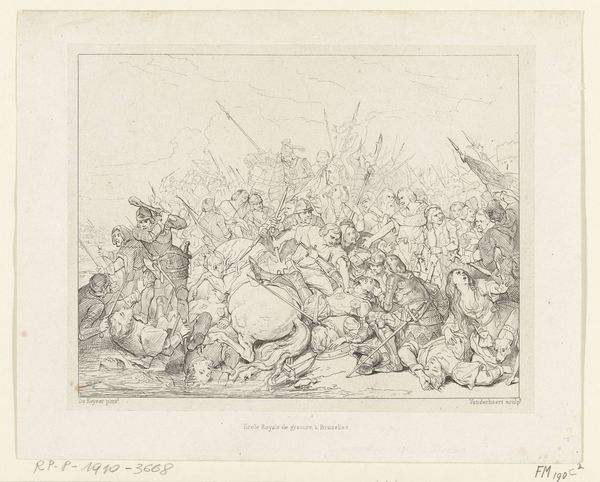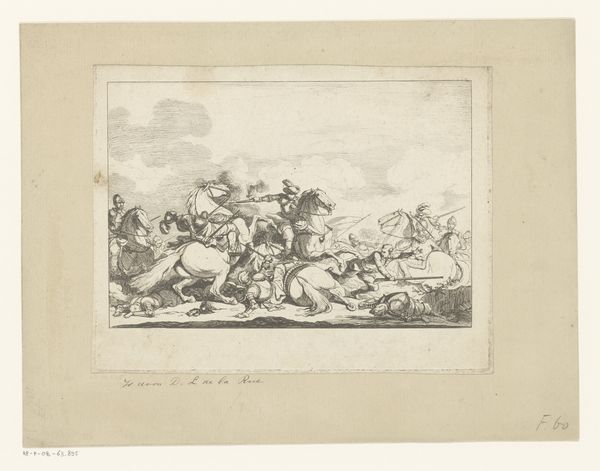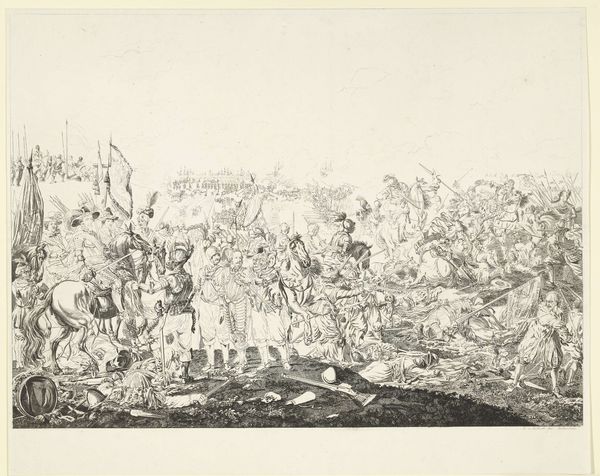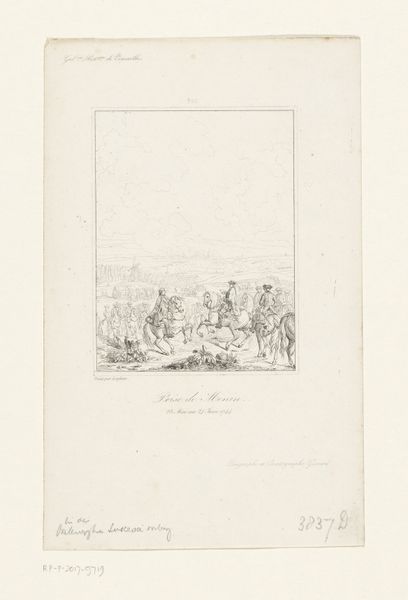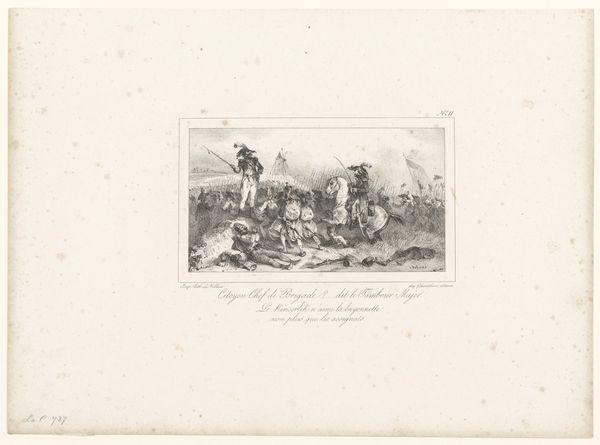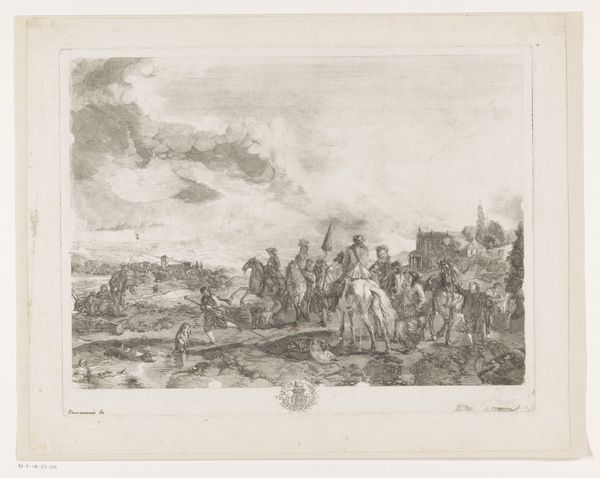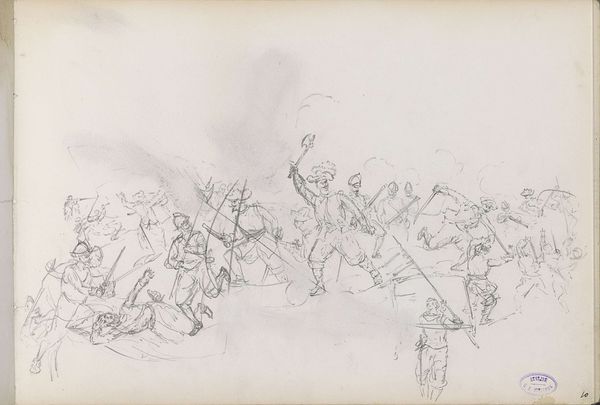
drawing, print, etching, engraving
#
drawing
#
narrative-art
# print
#
etching
#
old engraving style
#
history-painting
#
engraving
Dimensions: height 149 mm, width 230 mm
Copyright: Rijks Museum: Open Domain
Charles Onghena made this print of Kenau during the siege of Haarlem in 1873, using etching, a printmaking technique with a rich history. Etching involves covering a metal plate with a waxy, acid-resistant substance, then scratching an image into that coating. When acid is applied, it bites into the exposed metal, creating lines. The plate is then inked, and the ink held in the etched lines is transferred to paper under high pressure. Onghena’s choice of etching is significant. It's a technique that allows for detailed, linear work – perfect for capturing the chaos of battle and the intensity of the siege. But beyond aesthetics, the process speaks to the wider social context. Printmaking, by its nature, is about reproduction and dissemination. Etchings like this one played a crucial role in shaping public opinion, circulating narratives of heroism and resistance. So, when you look at this print, consider the labor involved, the skill required, and the intention behind its creation. It’s not just an image; it’s a carefully crafted message, made to resonate with a broad audience. By understanding the materials, making, and context, we can appreciate the full meaning of Onghena's work.
Comments
No comments
Be the first to comment and join the conversation on the ultimate creative platform.
